These "Ten Essentials" should be taken on every outing away from civilization ... even the short ones because you never know what might happen.
REI Has This Expanded Discussion
On Their Website
Updated Ten Essential "Systems"
- Navigation (map and compass)
- Sun protection (sunglasses and sunscreen)
- Insulation (extra clothing)
- Illumination (headlamp/flashlight)
- First-aid supplies
- Fire (waterproof matches/lighter/candles)
- Repair kit and tools
- Nutrition (extra food)
- Hydration (extra water)
- Emergency shelter (tent/plastic tube tent/garbage bag)
Classic Ten Essentials
- Map
- Compass
- Sunglasses and sunscreen
- Extra clothing
- Headlamp/flashlight
- First-aid supplies
- Firestarter
- Matches
- Knife
- Extra food
The original Ten Essentials list was assembled in the 1930s by The Mountaineers, a Seattle-based organization for climbers and outdoor adventurers. In 2003, the group's updated "systems" approach made its debut in its seminal text on climbing and outdoor exploration, Mountaineering: The Freedom of the Hills (The Mountaineers Books, 2010), now in its eighth edition.
Why create such a list? The book's editors explain: "The purpose of this list has always been to answer 2 basic questions: First, can you respond positively to an accident or emergency? Second, can you safely spend a night-or more-out?"
Packing these items whenever you step into the backcountry, even on day hikes, is a good habit to acquire. True, on a routine trip you may use only a few of them. Yet you'll probably never fully appreciate the value of the Ten Essentials until you really need one of them.
1. Navigation
Map and compass are now viewed as 2 components of a navigation system. Add a wrist altimeter, toss in a GPS and, well, you can see how the systems approach to the Ten Essentials can easily total more than 10 individual items.
A topographic map (in a protective sheath or case) should accompany you on any trip that involves anything more than a short, impossible-to-miss footpath or frequently visited nature trail. Handout maps, the type offered at visitor centers or entrance stations, usually provide only simplistic line drawings of trails and do not show the topographic details necessary for route finding. If, for example, you stray off the trail or need to locate a water source, you need a topo map.
A compass, combined with map-reading knowledge, is a vital tool if you become disoriented in the backcountry. Have high-tech GPS receivers made compasses, with a history that dates back to 12th-century Europe, obsolete? No. A compass weighs next to nothing and does not rely on batteries. So even if you're a techie who relies heavily on a GPS for navigation, a traditional compass is an indispensable backup. Note: A compass equipped with a sighting mirror can also be used to flash sunlight to a helicopter or rescuer during an emergency.
An altimeter is a worthwhile navigational extra to consider. It uses a barometric sensor to measure air pressure and provide a close estimate of your elevation-information that helps you track your progress and determine your location on a map. We say "estimate" because when weather changes, air pressure changes, and such a change can cause an altimeter's elevation reading to fluctuate even if it remains stationary.
If you travel regularly in the wilderness, consider taking a class to learn navigation techniques in depth.
2. Sun Protection
This involves sunglasses, sunscreen (for skin and lips) and, for optimized protection, lightweight, skin-shielding clothing.
Sunglasses are indispensable, and you'll need extra-dark glacier glasses if you're planning prolonged travel on snow or ice. All sunglasses sold at REI block 100% of ultraviolet light (UVA and UVB)-a key function of quality lenses. UVB rays, the rays that can burn your skin, have been linked to the development of cataracts.
Wraparound lenses keep light from entering the corners of your eyes and also help buffer eyes from wind. Factors influencing your choice of sunglasses include lens types, frames, fit and, of course, fashion.
When choosing sunscreen, health experts advise choosing 1) a formula that offers a sun protection factor (SPF) of at least 15, though SPF 30 is recommended for extended outdoor activity and 2) one that blocks both UVA and UVB rays.
A sunscreen's SPF number refers only to its ability to absorb sunburn-causing UVB rays; measuring how it performs against age-inducing UVA rays is a topic under discussion at the Food and Drug Administration. Active ingredients considered most effective against UVA light are avobenzone, ecamsule, zinc oxide and titanium dioxide.
The biggest mistake people make with sunscreen? Applying too little, dermatologists say. A thin application diminishes your protection. So glop it on; 1 ounce is needed to cover the arms, legs, neck and face of the average person. Depending on many factors (time of day, sweat and more), you should reapply as often as every 2 hours. And don't overlook SPF-rated lip balm.
Lightweight, synthetic Emergency shelter (tent/plastic tube tent/garbage bag) comes with an ultraviolet protection factor (UPF). Skin-care experts say using clothing to shield your skin is a good sun-protection strategy. Your activity level (and resulting perspiration) and the temperature are the factors that will determine if you choose to wear pants or shorts (or long sleeves vs. short sleeves) while outdoors. You'll still need sunscreen for your face, neck and hands.
3. Insulation
Conditions can abruptly turn wet, windy or chilly in the backcountry, so it's smart to carry an additional layer of clothing in case something unexpected (you get hurt or lost, for example) prolongs your exposure to the elements.
The authors of Mountaineering suggest this strategy: "Extra clothing should be selected according to the season. Ask this question: What is needed to survive the worst conditions that could be realistically encountered on this trip?"
Common options include a layer of underwear (tops and bottoms), an insulating hat, extra socks and a synthetic jacket or vest. And yes, humans lose significant heat through their heads. Thus, according to Mountaineering, it's smart to pack a hat or balaclava "because they provide more warmth for their weight than any other clothing article."
4. Illumination
Headlamps are the light source of choice in the backcountry. Reasons:
High-output LEDs (the 1- and 3-watt varieties) provide light output that is comparable to the output of incandescent bulbs, even those that use pressurized gas (xenox, halogen and other intensity-boosting gases). Because LEDs can handle rugged use (no filaments to break), offer vastly superior battery life and are perpetually evolving to higher levels of performance, the vast majority of headlamps these days are LED models.
It's easy to overextend your stay on a picture-perfect mountain. If you're trying to hustle out of the backcountry in dwindling light or trying to set up camp as the last bit of blue drains from the sky, a headlamp is an invaluable aid.
Many headlamps also offer a strobe mode. It's a great option to have for emergency situations. Headlamps offer their longest battery life while in strobe mode.
Flashlights and packable lanterns also have value. Some flashlights cast very powerful beams and are useful for signaling during emergencies.
Always carry spare batteries-and if your light is equipped with an incandescent bulb, also carry spare bulbs. Every member of a backcountry party should carry his or her own light.
5. First-aid Supplies
Pre-assembled first-aid kits take the guesswork out of building your own kit, though many people personalize these kits to suit individual needs. Any kit should include treatments for blisters, adhesive bandages of various sizes, several gauze pads, adhesive tape, disinfecting ointment, over-the-counter pain medication, pen and paper. Latex gloves also deserve consideration. The length of your trip and the number of people involved will impact the contents of your kit. It's also a good idea to carry some sort of compact guide to dealing with medical emergencies.
6. Fire
Matches headed into the backcountry should be the waterproof variety, or they should be stored in a waterproof container. Take plenty and ensure they are kept dry. Convenience-store matchbooks are often too flimsy and poorly constructed to be trusted for wilderness use. Save yourself some frustration and tote reliable matches on every trip. Mechanical lighters are handy, but always carry some matches as a backup.
Firestarter, as the name implies, is an element that helps you jump-start (and possibly sustain) a fire. Of all the classic Ten Essentials, it is probably the one least commonly carried by wilderness travelers. But should you get stranded overnight in the boonies and you start to shiver, you need the means to build an emergency fire.
The ideal firestarter ignites quickly and sustains heat for more than a few seconds. Candidates include dry tinder tucked away in a plastic bag; candles; priming paste; heat "nuggets" (chipped-wood clusters soaked in resin). Even lint trappings from a household clothes dryer can work.
7. Repair Kit and Tools
Knives or multitools are handy for gear repair, food preparation, first aid, making kindling or other emergency needs. A basic knife should have at least 1 foldout blade (more likely 2), 1 or 2 flathead screwdrivers, a can opener and (though some people will call this a luxury) a pair of foldout scissors. The more complex your needs (if, for example, you are leading an inexperienced group), the more options you may want in your knife or tool.
If you carry a self-inflating mattress, you probably do not carry a repair kit for it. Typically, the only people who do are those who have endured a puncture deep in the backcountry. Depending on your outlook on Murphy's Law, it's an item worth considering.
Here's a classic tip for carrying the basics of a poor-man's repair kit: Wrap strips of duct tape (the universal fix-it product) around your water bottle or trekking poles so you can repair who-knows-what in the backcountry.
8. Nutrition (extra food)
Always pack at least an extra day's worth of food. It can be as simple as a freeze-dried meal, but it's even better to include no-cook items with nearly infinite storage times: extra energy bars, nuts, dried fruits or jerky.
The process of digesting food helps keep your body warm, so on a cold night it's smart to munch some food before bunking down-just don't leave animal-attracting leftovers inside your shelter.
9. Hydration (extra water)
Mountaineering suggests always carrying at least 1 water bottle and a collapsible water reservoir. You should also carry some means for treating water, whether it is a filter/purifier or chemical treatment.
When beginning extended travel along a ridgeline or in alpine conditions, consult your map and try to envision possible water sources. Try to resupply at the last obvious water source before beginning a stretch of unpredictable water availability.
10. Emergency Shelter
Shelter is a new component in the updated Ten Essentials, one that seems targeted at day trippers. (Most overnight wilderness travelers already carry a tent or tarp.) The thinking is, if getting lost or injured leaves you stranded in the backcountry, something is better than nothing if you have to deal with wind or rain. Options include an ultralight tarp, a bivy sack, an emergency space blanket (which packs small and weighs just ounces), even a large plastic trash bag.
Beyond the Top Ten
Earlier I mentioned an altimeter as worthy candidate to consider as an add-on to the updated Ten Essentials list. Here are a few others:
Final Thoughts
Even though you may only occasionally use a few of these items, carrying the Ten Essentials on all your backcountry excursions is a smart move. They serve as the antidote to the unexpected, like the seatbelts in your vehicle.
The Ten Essentials can also form the core of your home (or car) emergency-preparedness kit. They are all about safety, advance preparation and peace of mind. They could potentially save your life.
The New Ten Essentials-A Systems Approach
The point of the Ten Essentials list (developed by the Mountaineers Club, with origins in the climbing course taught by the Club since the 1930s) has always been to help answer two basic questions: First, can you respond positively to an accident or emergency? Second, can you safely spend a night-or more-out? The list has evolved over time from a list of individual items to a list of functional systems; the updated Ten Essential Systems list is included in Mountaineering: The Freedom of the Hills, 8th Edition.
Ten Essentials: The Classic List
Ten Essential Systems
1. Navigation
Always carry a detailed topographic map of the area you are visiting, and place it in a protective case or plastic covering. Always carry a compass. Climbers may also choose to carry other navigational tools such as an altimeter or global positioning system (GPS) receiver; other aids include route markers, route descriptions, and other types of maps or photos.
2. Sun Protection
Carry and use sunglasses, sunscreen for the lips and skin, and clothing for sun protection.
3. Insulation (Extra Clothing)
How much extra clothing is necessary for an emergency? The garments used during the active portion of a climb and considered to be the basic climbing outfit include inner and outer socks, boots, underwear, pants, shirt, sweater or fleece jacket, hat, mittens or gloves, and raingear. The term "extra clothing" refers to additional layers that would be needed to survive the long, inactive hours of an unplanned bivouac.
4. Illumination
Even if the climbing party plans to return to their cars before dark, it is essential to carry a headlamp or flashlight, just in case. Batteries and bulbs do not last forever, so carry spares of both at all times.
5. First-Aid Supplies
Carry and know how to use a first-aid kit, but do not let a first-aid kit give you a false sense of security. The best course of action is to always take the steps necessary to avoid injury or sickness in the first place. At a minimum, a first-aid kit should include gauze pads in various sizes, roller gauze, small adhesive bandages, butterfly bandages, triangular bandages, battle dressing (or Carlisle bandage), adhesive tape, scissors, cleansers or soap, latex gloves, and paper and pencil.
6. Fire
Carry the means to start and sustain an emergency fire. Most climbers carry a butane lighter or two instead of matches in a waterproof container. Either must be absolutely reliable. Firestarters are indispensable for igniting wet wood quickly to make an emergency campfire. Common firestarters include candles, chemical heat tabs, and canned heat. On a high-altitude snow or glacier climb, where firewood is nonexistent, it is advisable to carry a stove as an additional emergency heat and water source.
7. Repair Kit and Tools
Knives are so useful in first aid, food preparation, repairs, and climbing that every party member needs to carry one. Leashes to prevent loss are common. Other tools (pliers, screwdriver, awl, scissors) can be part of a knife or a pocket tool, or carried separately-perhaps even as part of a group kit. Other useful repair items are shoelaces, safety pins, needle and thread, wire, duct tape, nylon fabric repair tape, cable ties, plastic buckles, cordage, webbing, and parts for equipment such as tent, stove, crampons, snowshoes, and skis.
8. Nutrition (Extra Food)
For shorter trips, a one-day supply of extra food is a reasonable emergency stockpile in case foul weather, faulty navigation, injury, or other reasons delay the planned return. An expedition or long trek may require more. The food should require no cooking, be easily digestible, and store well for long periods. A combination of jerky, nuts, candy, granola, and dried fruit works well. If a stove is carried, cocoa, dried soup, and tea can be added. There are many possibilities.
9. Hydration (Extra Water)
Carry extra water and have the skills and tools required for obtaining and purifying additional water. Always carry at least one water bottle or collapsible water sack. Daily water consumption varies greatly. Two quarts (liters) daily is a reasonable minimum; in hot weather or at high altitudes, 6 quarts may not be enough. In dry environments, carry additional water. Plan for enough water to accommodate additional requirements due to heat, cold, altitude, exertion, or emergency.
10. Emergency Shelter
If the climbing party is not carrying a tent, carry some sort of extra shelter from rain and wind, such as a plastic tube tent or a jumbo plastic trash bag. Another possibility is a reflective emergency blanket. It can be used in administering first aid to an injured or hypothermic person, or can double as a means of shelter.
Adapted from Mountaineering: Freedom of the Hills, 8th Edition by The Mountaineers, The Mountaineers Books.
Here is another Ten Essentials list:
The Ten Essentials + 1
The Boy Scouts have their version of the Ten Essentials
The 10 Essentials
By Karen Berger
Photographs by John R. Fulton Jr.
Don't leave home for the outdoors without these basic items. They could save your life.
THE 10 ESSENTIALS are items every outdoor adventurer should include in his or her pack. The original list was devised in the 1930's by The Mountaineers, a Seattle-based hiking, climbing, and conservation organization, whose members get out in some truly dreadful weather-including in the rainy North Cascades, along the Olympic Peninsula, and on such snow-covered peaks as Mount Rainier.
The Mountaineers' essentials list was designed to keep climbers safe in case of accident, injury, or misadventure. Over time, like any classic, the list has been used and altered, but the core remains the same. Seventy years later, the list is included in many outdoor guides, including the latest edition of the Boy Scout Fieldbook.
Here's what you need-and why.
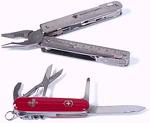

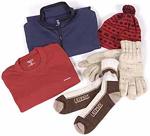
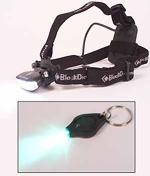
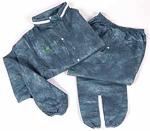
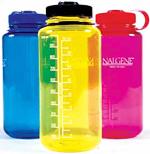
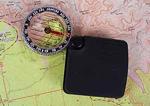
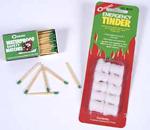
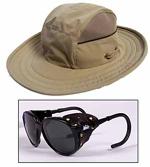
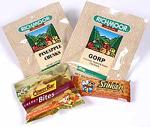
1. Pocketknife or multipurpose tool.
These enable you to cut strips of cloth into bandages, remove splinters, fix broken eyeglasses, and perform a host of repairs on malfunctioning gear-not to mention cut cheese and open cans.
2. First-aid kit.
Prepackaged first-aid kits for hikers are available at outfitters, but you can customize your kit with your favorite blister treatment and ointments for common outdoor ailments (a topical antihistamine, for example, to take care of itches and rashes). Double your effectiveness with knowledge: Take a 16-hour Wilderness First Aid Basics course from the American Red Cross.
3. Extra clothing.
Above timberline, bring one more clothing layer than you think you'll need. Two rules: Avoid cotton (it dries slowly and keeps moisture close to your skin), and always carry a hat. A windproof, water-resistant fleece jacket can help you withstand ornery mountain conditions. Plastic baggies or extra socks can help keep hands warm.
4. Flashlight or headlamp with extra batteries.
Headlamps and flashlights allow you to find your way in the dark or signal for help. Headlamps are convenient for hands-free use.
5. Rain gear.
Remember that high mountains make their own weather, and storms can erupt suddenly and violently. Even in a temperate summer forest, a dousing rain can quickly chill you to the point of hypothermia. Rain gear protects against not only rain, but also wind, cold, and even insects.
6. Water bottle.
Without enough water, your body's muscles and organs simply can't perform as well. You'll be susceptible to hypothermia and altitude sickness, not to mention the abject misery of raging thirst. Always carry plenty of water and stop often to drink.
7. Map and compass.
A map not only tells where you are and how far you have to go, it can help you find campsites, water, and an emergency exit route in case of an accident. A compass helps you find your way through unfamiliar terrain-especially in bad weather where you can't see the landmarks. A GPS (global positioning system) can also help-but it is no substitute for knowing how to read a map.
The warmth of a fire and a hot drink can help prevent hypothermia. Also, a fire can be a signal for help if you get lost. Carry matches and a small amount of fire starter protected in zipper-locking bags. Dripping candle wax on match tips helps waterproof them. Commercially available windproof and waterproof matches are also a good choice.
Fire starter is anything flammable, from pocket lint to filled-in journal pages. Pine needles and birch bark make especially good starter, even when wet.
9. Sun protection and sunglasses.
Especially above timberline, when there is a skin-scorching combination of sun and snow, you'll need sun-glasses to prevent snow blindness and sunscreen to prevent sunburn. Buy sunglasses that are ultraviolet ray (UV) resistant and have side flaps (ventilating holes that keep them from fogging).
Don't use sunscreen that's been sitting in your medicine cabinet for a season or more: It has probably lost at least some of the effectiveness of its sun-protection factor (SPF), a rating of how well and how long the sunscreen will keep you from getting sunburned. A light-colored hat with a wide brim is also an effective sun deterrent. In desert conditions, consider using a long-sleeved light shirt and lightweight loose-fitting long pants. Zipper-off legs give more versatility.
10. Trail food.
Nothing boosts energy and spirits as much as a quick trail snack. You can make your own trail mix with nuts, raisins, banana chips, and chocolate bits. The combination of sugar, fats, and potassium tastes great and provides quick energy, long-lasting calories, and replacement electrolytes.
Always take a bit more food than you think you will need. A lot of things could keep you out longer than expected, like a lengthy detour, getting lost, an injury, or difficult terrain.
Karen Berger's latest book, More Everyday Wisdom (Mountaineers Books), answers scores of outdoor questions. Visit her at www.hikerwriter.com.